Abstract
At various stages during spore formation sporangia were shocked by cold treatment or with toluene, and the germination requirements of the prespores were examined. Up to 5 h after induction of sporulation (t5) germination was spontaneous; i.e., it occurred without any added germinants. After t5, during stages V and VI, the capacity for spontaneous germination diminished progressively, and the spores acquired a need for externally added germinants. At t6 this need was satisfied by either L-alanine or a mixture of KCl, glucose, and fructose. By t8, the latter response had disappeared. The spores germinated only with L-alanine, and the response was much slower. Experiments with chloramphenicol showed that the germination properties of the spores appearing between t6 and t8 were the expression of events in protein synthesis that had occurred before t5. Although the germination requirements developed at about the same time as heat resistance, they could be dissociated from heat resistance in wild-type and mutant cells. The germination properties of the developing spores are additional marker events characterizing the later stages of sporulation, as follows: (i) spontaneous germination (up to the end of stage IV); (ii) germination requirements that are satisfied by KCl-glucose-fructose or L-alanine (stage V); and (iii) slow germination response with L-alanine only (stage VI).
Full text
PDF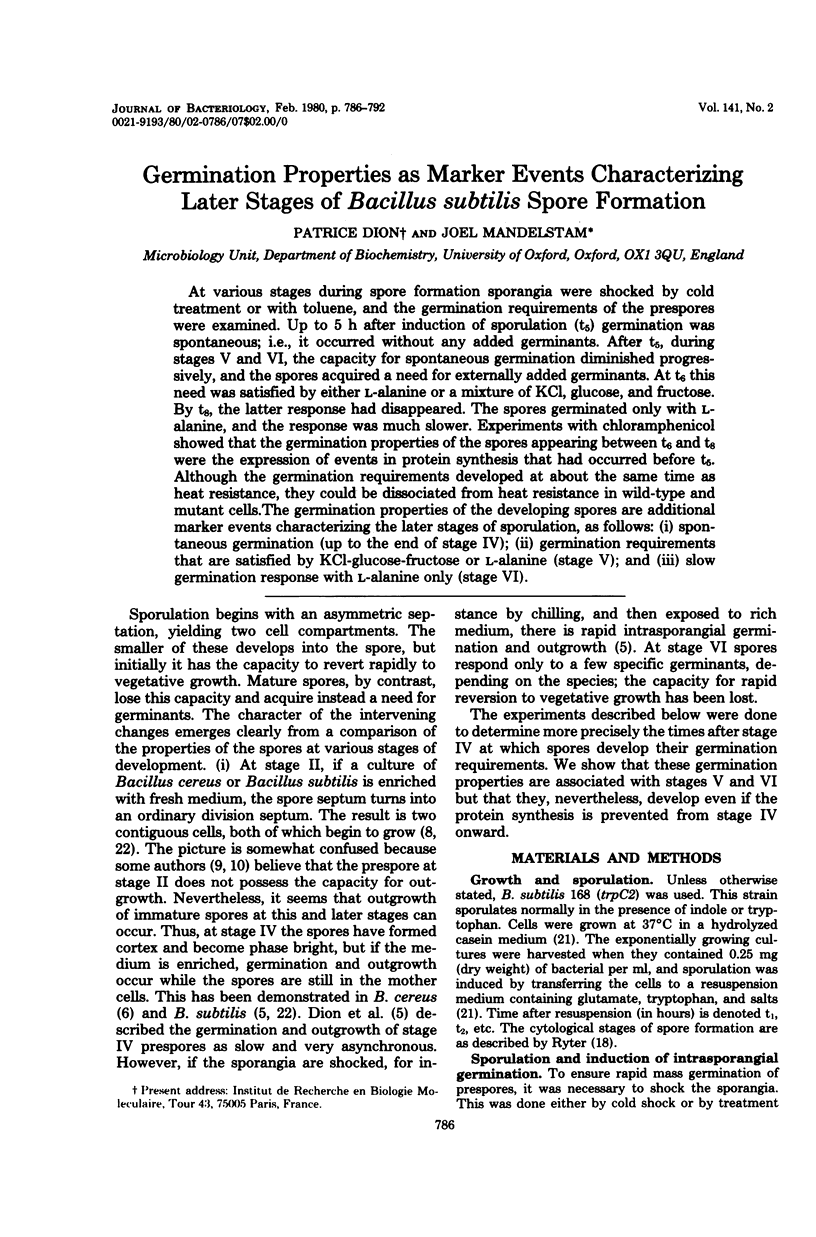
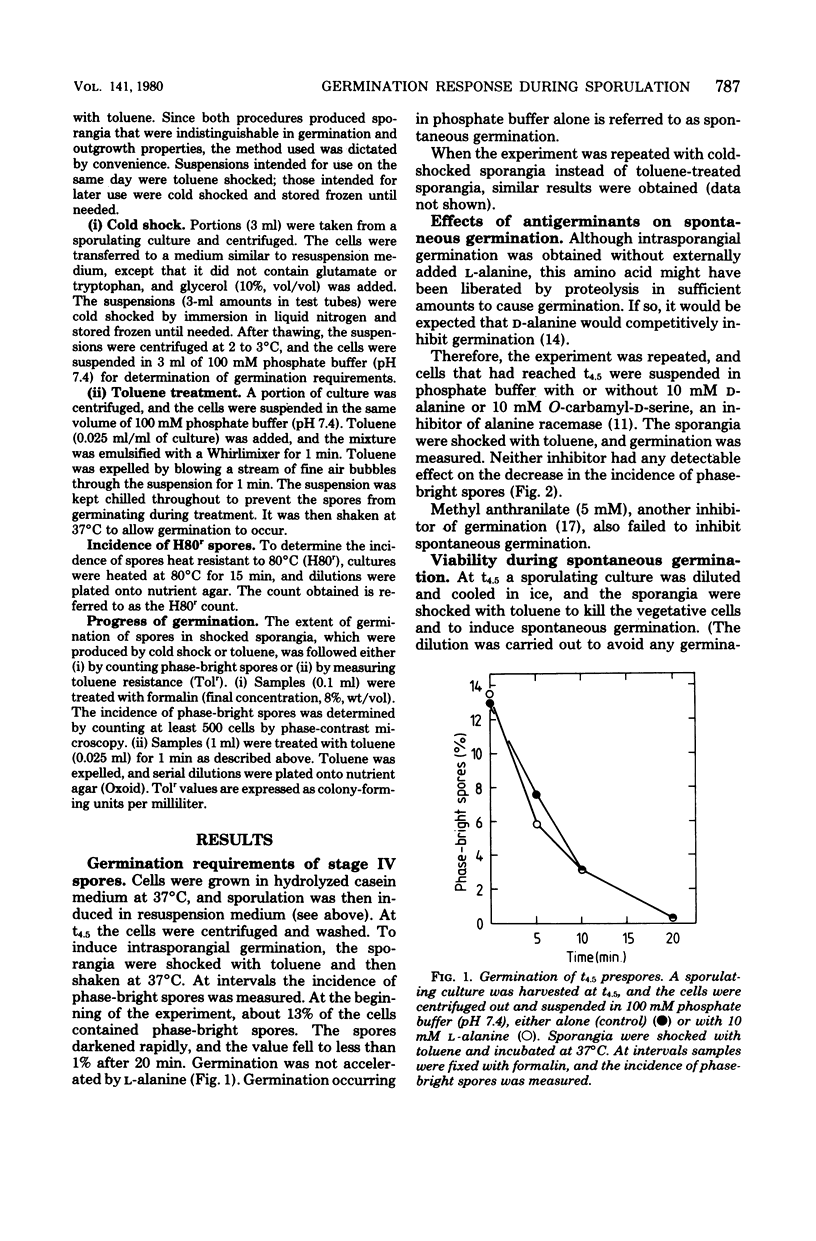
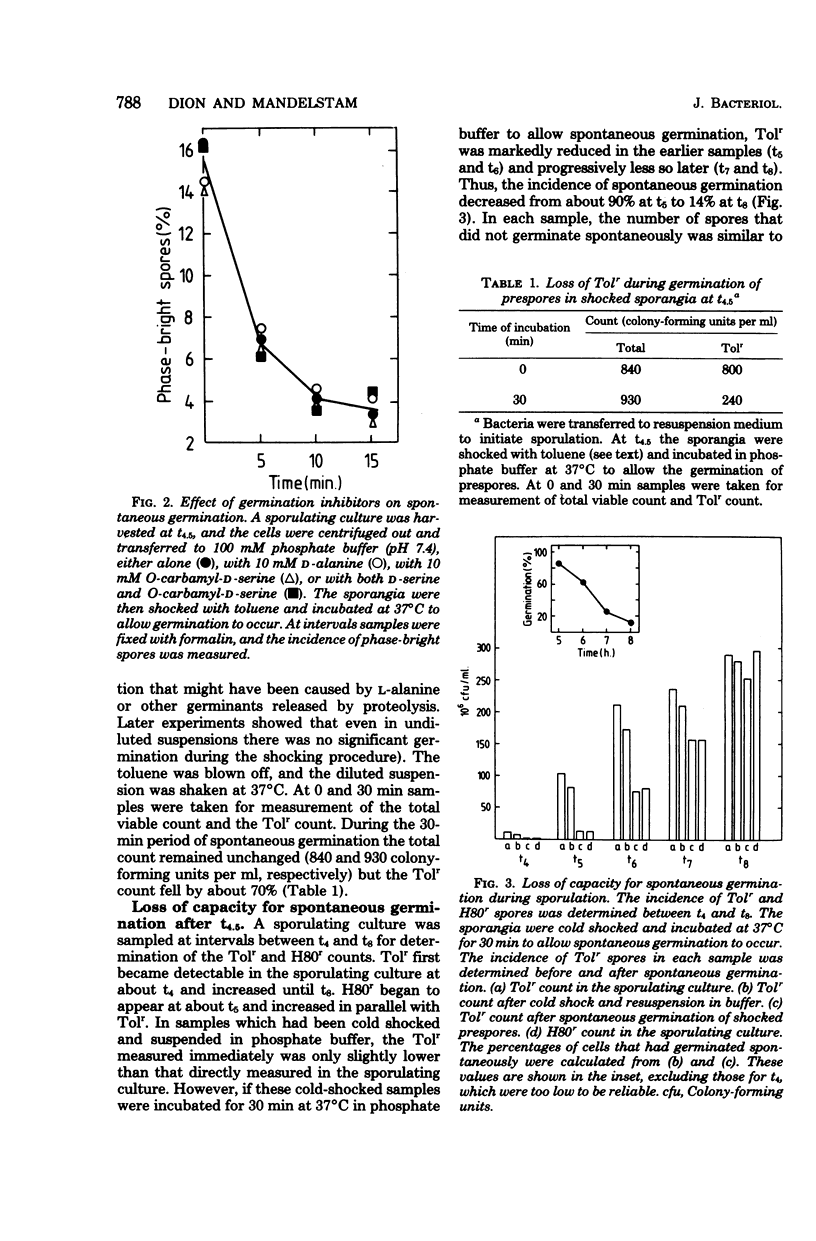
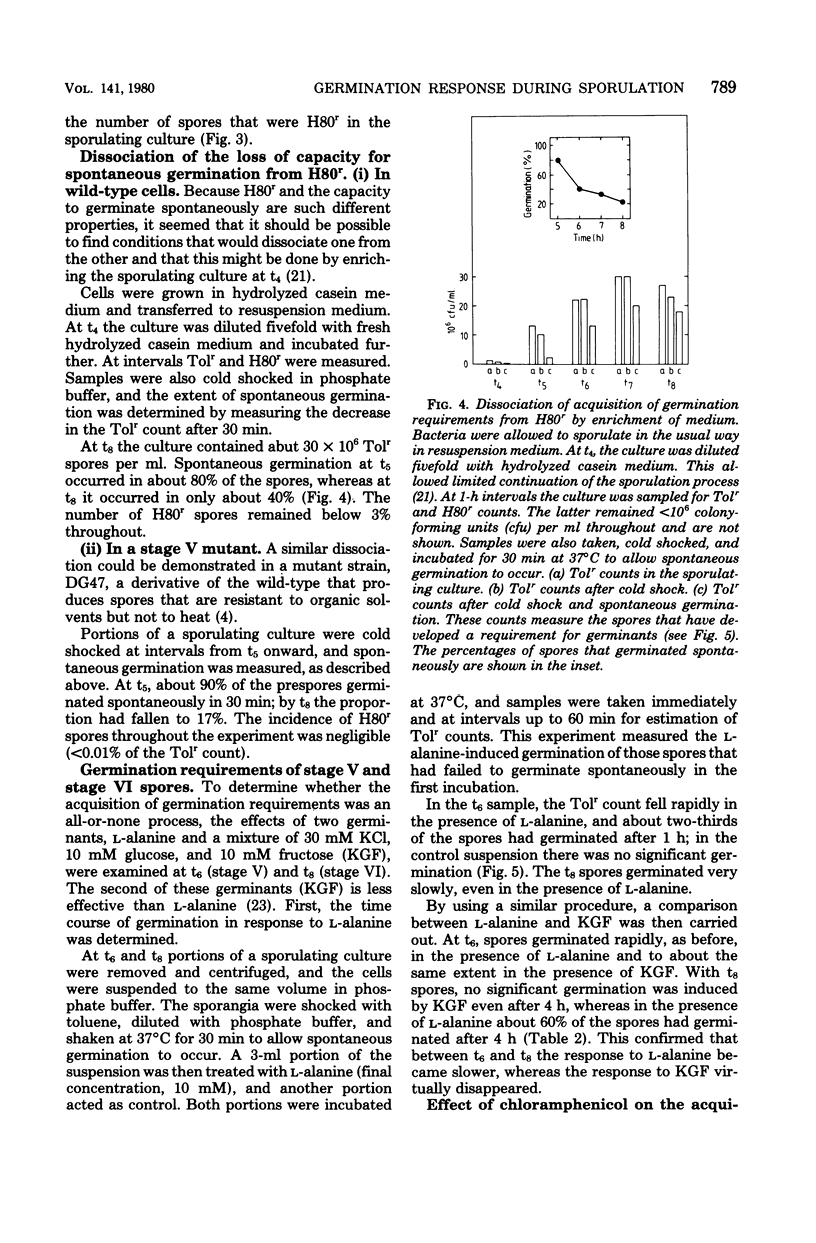
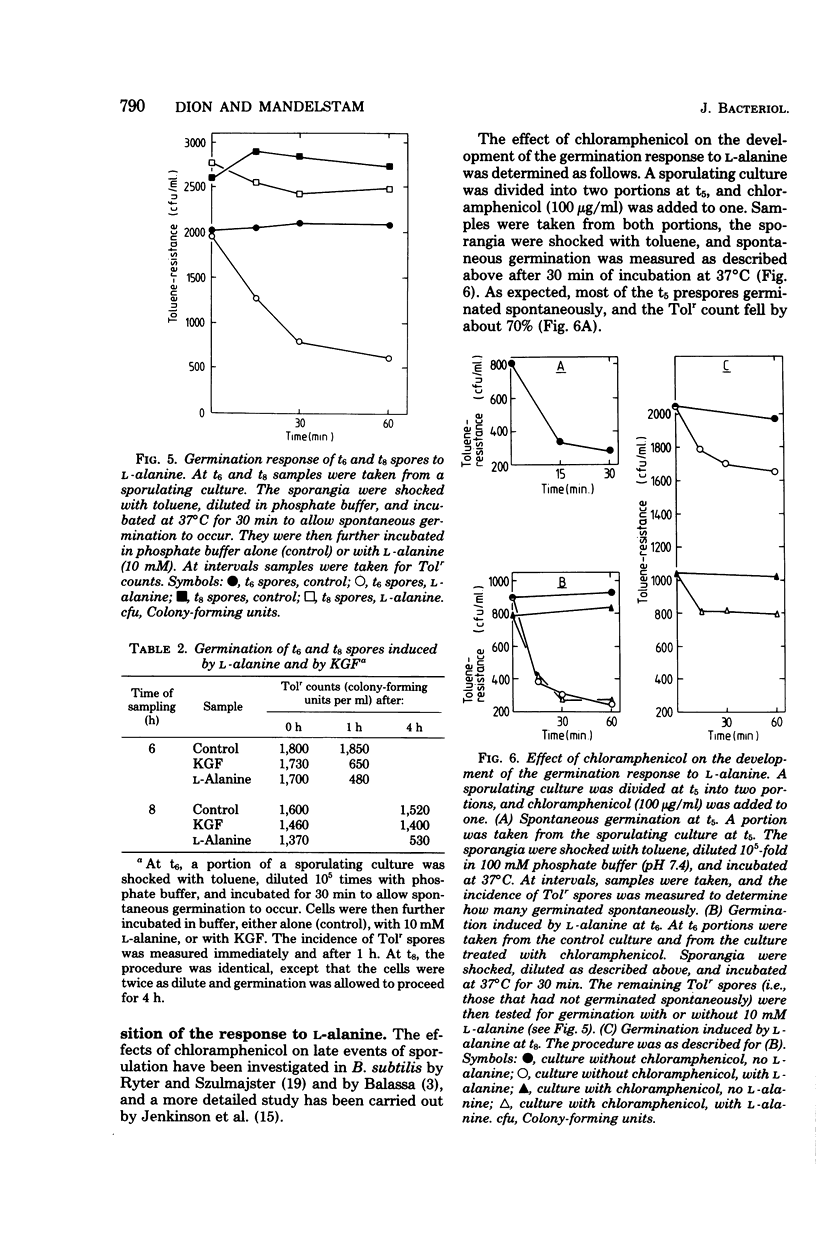
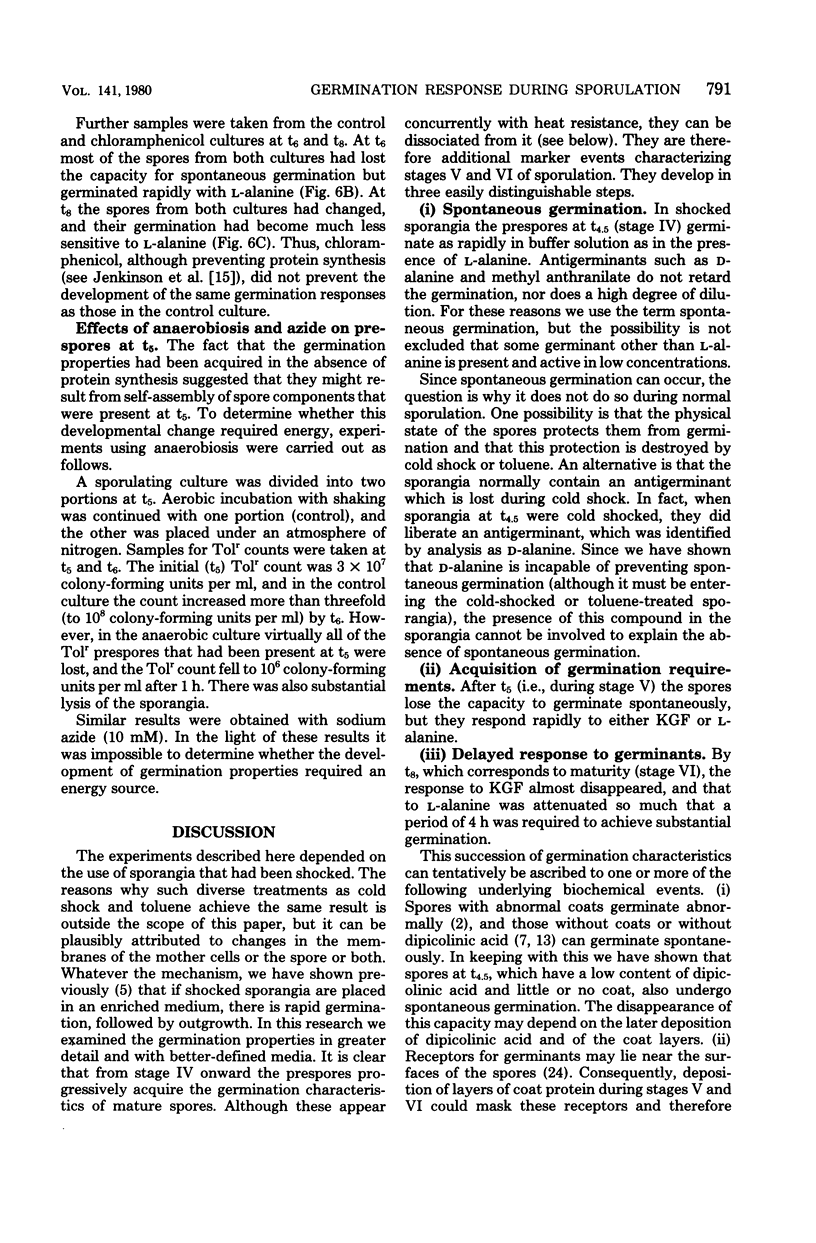

Selected References
These references are in PubMed. This may not be the complete list of references from this article.
- Aronson A. I., Fitz-James P. C. Properties of Bacillus cereus spore coat mutants. J Bacteriol. 1975 Jul;123(1):354–365. doi: 10.1128/jb.123.1.354-365.1975. [DOI] [PMC free article] [PubMed] [Google Scholar]
- Aronson A. I., Fitz-James P. C. Reconstitution of bacterial spore coat layers in vitro. J Bacteriol. 1971 Oct;108(1):571–578. doi: 10.1128/jb.108.1.571-578.1971. [DOI] [PMC free article] [PubMed] [Google Scholar]
- Balassa G. Synthèse et fonction des ARN messagers au cours de la sporulation de Bacillus subtilis. Ann Inst Pasteur (Paris) 1966 Feb;110(2):175–191. [PubMed] [Google Scholar]
- Coote J. G. Sporulation in Bacillus subtilis. Characterization of oligosporogenous mutants and comparison of their phenotypes with those of asporogenous mutants. J Gen Microbiol. 1972 Jun;71(1):1–15. doi: 10.1099/00221287-71-1-1. [DOI] [PubMed] [Google Scholar]
- Fitz-James P. C. Formation of protoplasts from resting spores. J Bacteriol. 1971 Mar;105(3):1119–1136. doi: 10.1128/jb.105.3.1119-1136.1971. [DOI] [PMC free article] [PubMed] [Google Scholar]
- Freese E. B., Freese E. The influence of the developing bacterial spore on the mother cell. Dev Biol. 1977 Oct 15;60(2):453–462. doi: 10.1016/0012-1606(77)90142-7. [DOI] [PubMed] [Google Scholar]
- Fréhel C., Ryter A. Réversibilité de la sporulation chez B. subtilis. Ann Inst Pasteur (Paris) 1969 Sep;117(3):297–311. [PubMed] [Google Scholar]
- Gould G. W. Recent advances in the understanding of resistance and dormancy in bacterial spores. J Appl Bacteriol. 1977 Jun;42(3):297–309. doi: 10.1111/j.1365-2672.1977.tb00697.x. [DOI] [PubMed] [Google Scholar]
- Gould G. W. Stimulation of L-alanine-induced germination of Bacillus cereus spores by D-cycloserine and O-carbamyl-D-serine. J Bacteriol. 1966 Oct;92(4):1261–1262. doi: 10.1128/jb.92.4.1261-1262.1966. [DOI] [PMC free article] [PubMed] [Google Scholar]
- HILLS G. M. Chemical factors in the germination of spore-bearing aerobes: observations on the influence of species, strain and conditions of growth. J Gen Microbiol. 1950 Jan;4(1):38–47. doi: 10.1099/00221287-4-1-38. [DOI] [PubMed] [Google Scholar]
- Hanson R. S., Curry M. V., Garner J. V., Halvorson H. O. Mutants of Bacillus cereus strain T that produce thermoresistant spores lacking dipicolinate and have low levels of calcium. Can J Microbiol. 1972 Jul;18(7):1139–1143. doi: 10.1139/m72-175. [DOI] [PubMed] [Google Scholar]
- Jenkinson H. F., Kay D., Mandelstam J. Temporal dissociation of late events in Bacillus subtilis sporulation from expression of genes that determine them. J Bacteriol. 1980 Feb;141(2):793–805. doi: 10.1128/jb.141.2.793-805.1980. [DOI] [PMC free article] [PubMed] [Google Scholar]
- Prasad C., Srinivasan V. R. Methyl anthranilate, an inhibitor for thegermination of spores of aerobic bacilli. Appl Microbiol. 1969 Jul;18(1):131–132. doi: 10.1128/am.18.1.131-132.1969. [DOI] [PMC free article] [PubMed] [Google Scholar]
- RYTER A. ETUDE MORPHOLOGIQUE DE LA SPORULATION DE BACILLUS SUBTILIS. Ann Inst Pasteur (Paris) 1965 Jan;108:40–60. [PubMed] [Google Scholar]
- Ryter A., Szulmajster J. Action du chloramphénicol sur la sporogenèse de B. subtilis. Ann Inst Pasteur (Paris) 1965 May;108(5):640–651. [PubMed] [Google Scholar]
- Sterlini J. M., Mandelstam J. Commitment to sporulation in Bacillus subtilis and its relationship to development of actinomycin resistance. Biochem J. 1969 Jun;113(1):29–37. doi: 10.1042/bj1130029. [DOI] [PMC free article] [PubMed] [Google Scholar]
- Wax R., Freese E. Initiation of the germination of Bacillus subtilis spores by a combination of compounds in place of L-alanine. J Bacteriol. 1968 Feb;95(2):433–438. doi: 10.1128/jb.95.2.433-438.1968. [DOI] [PMC free article] [PubMed] [Google Scholar]
- Yasuda-Yasaki Y., Namiki-Kanie S., Hachisuka Y. Inhibition of Bacillus subtilis spore germination by various hydrophobic compounds: demonstration of hydrophobic character of the L-alanine receptor site. J Bacteriol. 1978 Nov;136(2):484–490. doi: 10.1128/jb.136.2.484-490.1978. [DOI] [PMC free article] [PubMed] [Google Scholar]


